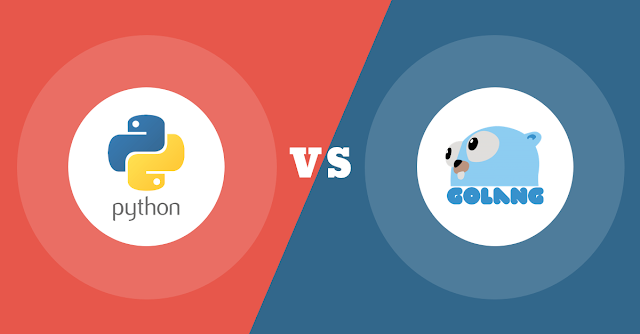What Python brings to AI programming
You can hardly consider any programming language perfect, but certainly, Python has its strengths in the context of AI. Here are the most significant ones.Language accessibility
Besides, this language is widespread. Recently it’s been ranked by the Institute of Electronics and Electrical Engineers as the top programming language of 2018. Python is an accessible programming language, and it keeps gaining more ground. For businesses, accessibility means a vast market of Python experts.Well established community
According to GitHub annual statistics, last year the global Python community sent over 1 million pull requests. The community and the ecosystem around Python are vibrant and active. The community contributes much into creating new libraries, updating documentation, and extending toolset.The extensive set of libraries
Not to mention Tensorflow, the most popular open-source library used for many of Google’s machine learning applications. Python libraries help engineers build new algorithms (LightGBM), do model prediction (Eli5) and datasets processing (Keras), work with complex data (Scikit-Learn), and more.Python’s downsides
However, while Python is sometimes referred to as the best programming language for AI, it has its disadvantages.Too many versions of Python available
One more challenge that adds developer's confusion is packaging systems. Packaging systems in different versions are broken down in different ways which are hard to manage and document. In turn, different packaging systems may require installing multiple environments.
Even the most dedicated Python programmers find this point painful. The transition between versions and disconnection between Python 2 and Python 3 are just several issues.
Bad for large-scale engineering
When it comes to work involving a few hundred programmers, Python clearly losing to Golang scalability. It’s also challenging to use Python if you require a very ordered and disciplined way to do programming. The same is true when you are going to deploy very complex AI systems.Codebase may be difficult to maintain
Python offers many libraries, supports multiple systems, and third-party integrations. But, such variety often plays against Python.From many projections, developers state that Python is not easy to maintain. How so? Python lacks several language features like static type system. Plus, libraries related to different versions of Python often conflict with each other. Such conflicts cause problems with configuring a specific cluster or even leads to a general stop of working code. Also, its syntax is confusing and goes against assumptions that other programming languages make.
Lack of performance and multicore processing
Another challenge with Python is its performance, specifically CPU and GPU processing. There are ways to get around this challenge, but they are mostly tweaks. What works for specific use cases often just can’t be applied for most common uses.Golang advantages for AI programming
Does Golang have what it takes to beat Python? Let’s take a look at Golang advantages.Libraries written in Go comfortable for Go developers
Programming a purely Go solution means having fewer pieces from different languages. Golang developers don’t need to call out to libraries written in other languages. But the main advantage of having these libraries in Go isn’t deployment, but developer comfort.
Covering vast AI purposes
Go libraries cover the need for data handling (GoLearn), binary classification problems (Hector), and passing data (Goml). The number of libraries Golang offers is small (but consistently growing) and addresses a wide range of purposes. Also, Golang has Theano, a library similar to Python’s TensorFlow. Theano provides Go developers with pieces of algorithms that can be reused.Good at scale and computations
Unlike Python, Golang scales and performs well within large-scale projects. To compare, Go copes with complex math problems up to 20-50 times faster than Python. Another reason to use Golang for AI programming is its speed, especially when it comes to the speed of math computations.Minimalism and good code readability
For instance, when there’s a need for recursive algorithms, which can run slower due to the absence of tail-call optimization.
Most of Go’s algorithms stick to a minimalist approach. This allows developers to create very readable code after algorithm implementation. Yet, this minimalist approach can also be a weak point.
Golang downsides for AI programming
Talking about weak points, we suggest looking at these two.Golang toolkit extension in progress
Basically, it’s in the process of extension along with the Golang community itself. So far, Golang developers have performed about 285k pull requests globally, according to GitHub. Of course, Go has its libraries for AI and is capable of covering the most essential purposes, yet the toolkit is not as extensive.Need for deep AI expertise
For instance, default multithreading is helpful for Golang web development. Some Golang advantages for web development can play against it regarding AI programming. However, using multithreading for AI purposes requires seasoned Go developers with deep expertise in data science.Final thoughts
Clean codebase, reused algorithms, and good scalability makes Golang a great technology for AI. As Golang company, we truly believe its growing community will contribute much to overall AI programming.
Python keeps striking the list of the most demanded languages for AI programming. However, Golang is expanding its territory gradually. So far, Go has served great for web apps. Now it also has good potential for AI programming.














Wow! Nice Compression, Thanks a lot to share this information and urrently many golang development companies are relying for go language. I hope you will share another article for help to us.
ReplyDeleteI'm really impressed with your writing skills, as smart as the structure of your weblog.
ReplyDeleteGoLand Full Crack
Waves v12 Complete Crack